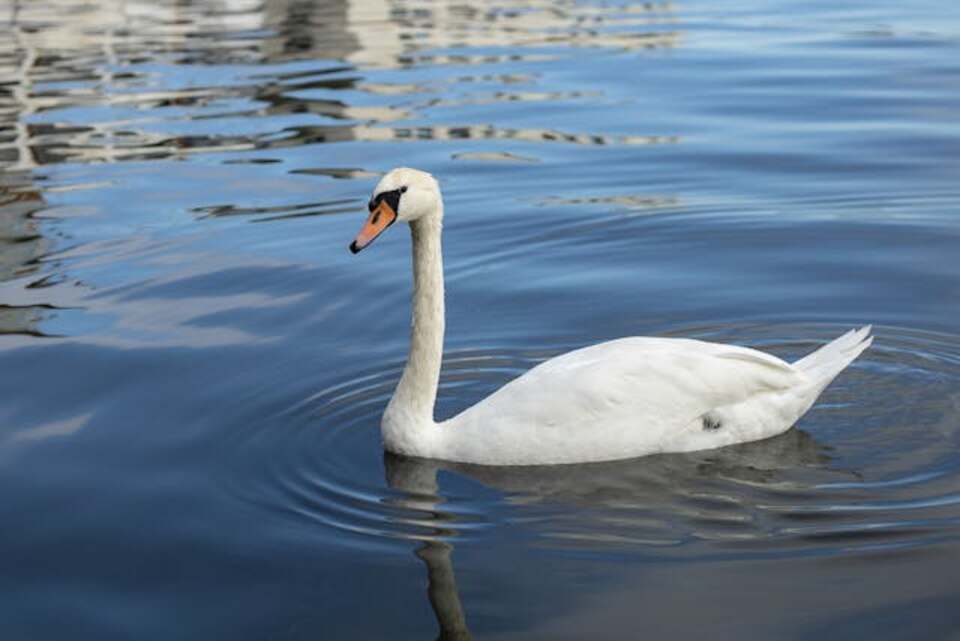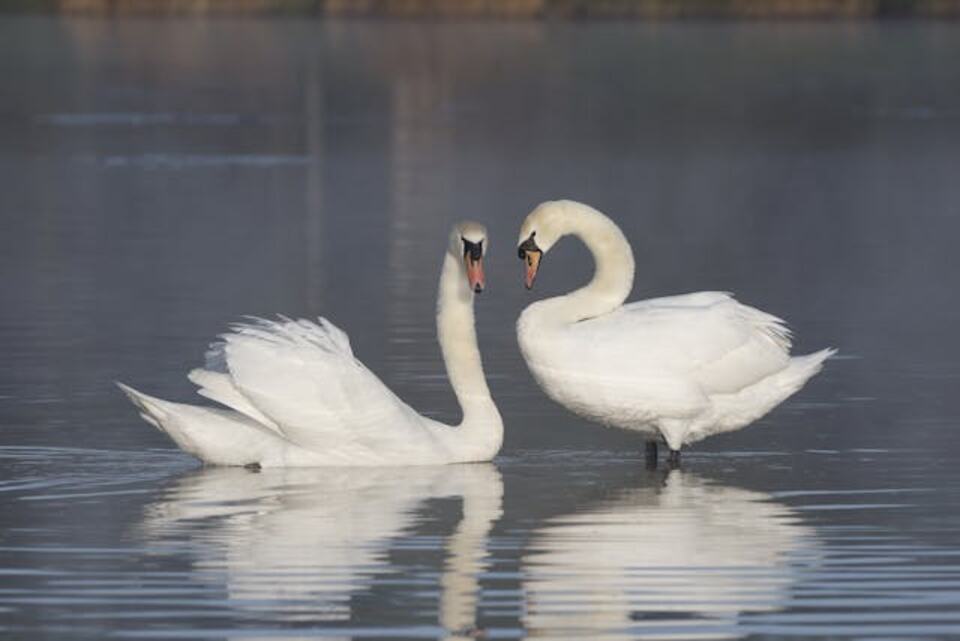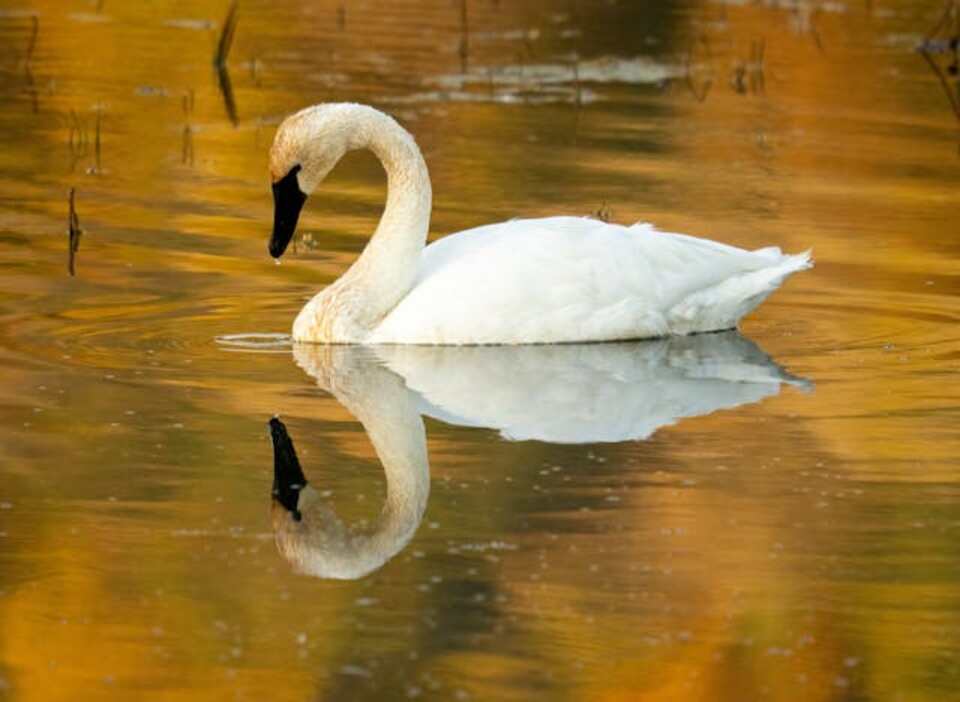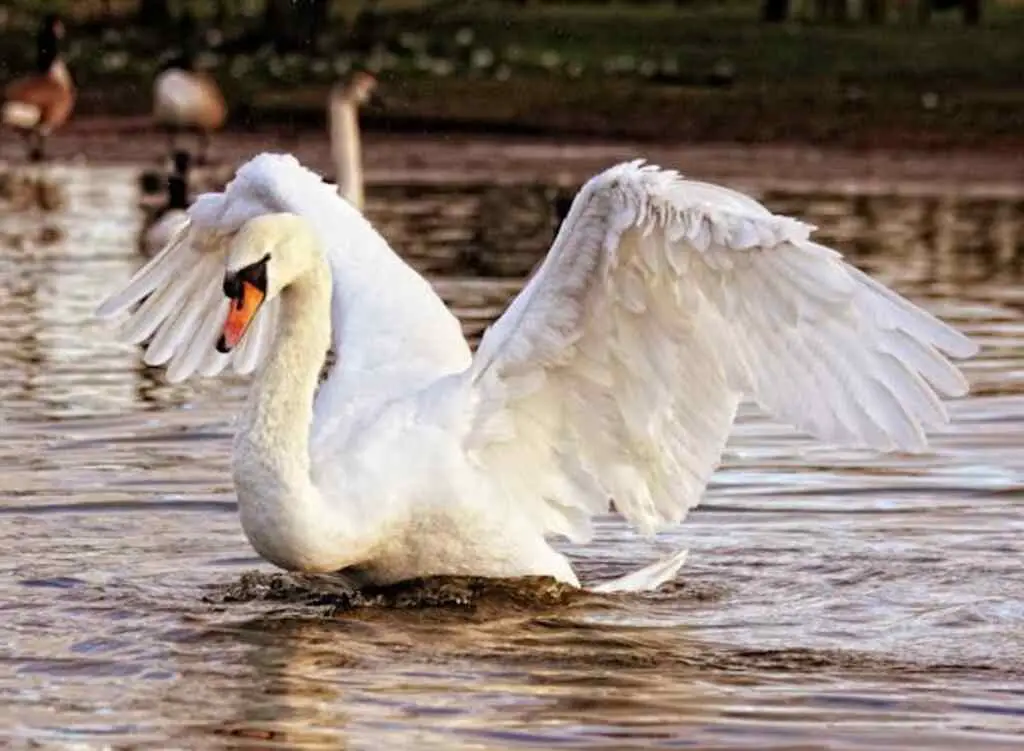Are you dreaming of graceful swans gliding across your pond, adding a touch of elegance to your property? Whether you’re a nature enthusiast or simply looking to enhance the beauty of your outdoor space, attracting swans can be a rewarding endeavor. In this comprehensive guide, we’ll explore everything you need to know about making your pond an irresistible haven for these majestic birds.
Table of Contents
- 1 Understanding Swans
- 2 Creating the Perfect Swan Habitat
- 3 Feeding Swans: Do’s and Don’ts
- 4 Maintaining Water Quality
- 5 Landscaping for Swan Appeal
- 6 Legal Considerations and Permits
- 7 Protecting Swans and Other Wildlife
- 8 Seasonal Considerations
- 9 Common Challenges and Solutions
- 10 Enjoying Your Swan Visitors
- 11 Conclusion
- 12 Author
Understanding Swans
Before we dive into the specifics of attracting swans, it’s crucial to understand these magnificent creatures. Swans are large waterfowl belonging to the genus Cygnus, and they’re known for their long necks, graceful movements, and striking appearance.
Common Swan Species
There are several species of swans, but the most common ones you might encounter or attract to your pond include:
Each species has its unique characteristics and habitat preferences, which we’ll explore throughout this guide.
Swan Behavior and Habits
Swans are known for their:
- Monogamous pair bonding
- Territorial nature, especially during breeding season
- Preference for shallow waters for feeding
- Herbivorous diet, primarily consisting of aquatic plants
- Migratory patterns (in some species)
Understanding these behaviors will help you create an environment that’s attractive and suitable for swans.

Creating the Perfect Swan Habitat
To attract swans to your pond, you need to provide an environment that meets their needs. Let’s explore the key elements of an ideal swan habitat.
Pond Size and Depth
Swans prefer larger bodies of water, but they can adapt to smaller ponds if other conditions are favorable. Here are some guidelines:
| Feature | Ideal Specifications | Minimum Size | Optimal Size |
|---|---|---|---|
| Depth | Varied, with areas of 3-4 feet (0.9-1.2 meters) for feeding | N/A | N/A |
| Shoreline | Gently sloping for easy access | N/A | N/A |
| Size | N/A | 1 acre (0.4 hectares) | 3-5 acres (1.2-2 hectares) or larger |
While these are ideal conditions, swans have been known to visit smaller ponds, especially if they’re part of a larger wetland complex or near other water bodies.
Water Features
To make your pond more attractive to swans, consider incorporating these features:
- Islands or Peninsulas: These provide safe nesting sites and resting areas.
- Shallow Areas: Essential for feeding on submerged vegetation.
- Deep Spots: Offer protection from predators and prevent complete freezing in winter.
- Gentle Currents: Created by small waterfalls or fountains, these can help maintain water quality.
Surrounding Landscape
The area around your pond is just as important as the water itself. Swans appreciate:
- Open spaces for takeoffs and landings
- Nearby grasslands for grazing
- Trees or tall vegetation for shelter and nesting materials
Feeding Swans: Do’s and Don’ts
While swans are primarily herbivores and can find most of their food naturally, supplemental feeding can help attract and sustain them, especially in smaller ponds.
Appropriate Foods for Swans
Here’s a list of suitable foods you can offer:
- Aquatic plants (waterweed, pondweed)
- Grains (wheat, barley, oats)
- Leafy greens (lettuce, spinach)
- Chopped vegetables (carrots, peas)
Feeding Guidelines
Follow these best practices when feeding swans:
- Offer food in shallow water or on the shore
- Provide small amounts regularly rather than large quantities infrequently
- Avoid bread and processed foods, which can cause nutritional imbalances
- Never feed moldy or spoiled food
Natural Food Sources
To create a sustainable environment, encourage the growth of natural swan foods in and around your pond:
- Submerged aquatic plants (e.g., pondweed, waterweed)
- Emergent vegetation (e.g., cattails, bulrushes)
- Grasses and sedges along the shoreline
Maintaining Water Quality
Swans are sensitive to water quality, and maintaining a clean, healthy pond is crucial for attracting and keeping them.
Key Water Quality Parameters
Monitor and maintain these water quality factors:
| Parameter | Ideal Range |
|---|---|
| pH | 6.5 – 8.5 |
| Dissolved Oxygen | >5 mg/L |
| Temperature | 50-80°F (10-27°C) |
| Clarity | Clear enough to see bottom in shallow areas |
Water Quality Management Techniques
- Aeration: Install fountains or aerators to increase oxygen levels and circulation.
- Filtration: Use biological or mechanical filters to remove excess nutrients and debris.
- Beneficial Bacteria: Introduce beneficial bacteria to break down organic matter.
- Aquatic Plants: Encourage growth of plants that naturally filter water.
Avoiding Pollutants
Be mindful of potential pollutants:
- Limit use of fertilizers near the pond
- Properly dispose of yard waste
- Prevent runoff from nearby roads or structures

Landscaping for Swan Appeal
Strategic landscaping can make your pond more attractive to swans while enhancing its overall beauty.
Plant Selection
Choose plants that serve multiple purposes:
- Food Sources: Pondweed, wild celery, duckweed
- Shelter: Cattails, bulrushes, reeds
- Nesting Materials: Grasses, sedges, rushes
- Aesthetic Appeal: Water lilies, lotus, irises
Landscaping Techniques
Consider these landscaping approaches:
- Zoning: Create distinct areas for feeding, nesting, and open water
- Natural Edges: Use curves and irregular shapes for a more natural look
- Varied Elevations: Incorporate both shallow and deeper areas
- Buffer Zones: Plant native vegetation around the pond to filter runoff and provide privacy
Maintenance Tips
Regular maintenance is key:
- Remove invasive species promptly
- Trim back overgrown vegetation
- Clear debris from the water surface
- Maintain proper water levels, especially during dry seasons
Legal Considerations and Permits
Before actively attracting swans to your pond, it’s crucial to understand the legal implications and obtain any necessary permits.
Protected Status
Many swan species are protected under various wildlife laws. In the United States, for example:
- The Migratory Bird Treaty Act protects native swan species
- Mute swans, while non-native, may be protected in some states
Permit Requirements
Depending on your location and intentions, you may need permits for:
- Modifying wetland habitats
- Feeding wildlife
- Handling or relocating swans
Consulting Authorities
Before making significant changes to attract swans, consult with:
- Local wildlife agencies
- Conservation organizations
- Experienced ornithologists or wildlife biologists
They can provide valuable guidance on legal requirements and best practices specific to your area.
Protecting Swans and Other Wildlife
While attracting swans, it’s important to consider the broader ecosystem and ensure the safety of all wildlife.
Predator Control
Swans and their cygnets (young) can be vulnerable to predators. Consider these protective measures:
- Install predator-proof fencing around nesting areas
- Use motion-activated lights or sound deterrents
- Create safe “escape routes” into deeper water
Coexistence with Other Species
Swans can be territorial, especially during breeding season. To promote harmony:
- Provide ample space for different species
- Create separate feeding areas for various waterfowl
- Monitor interactions and intervene if conflicts arise
Health and Safety Measures
To maintain a healthy environment:
- Regularly inspect for signs of disease or distress
- Have a plan for dealing with injured or sick birds
- Educate visitors about proper behavior around wildlife

Seasonal Considerations
Swans’ needs and behaviors change with the seasons, and your pond management should adapt accordingly.
Spring (Breeding Season)
- Ensure quiet, undisturbed nesting areas
- Provide extra nesting materials (if legal in your area)
- Monitor water levels to protect nests from flooding
Summer
- Maintain cool, shaded areas
- Ensure abundant food sources as energy needs increase
- Keep water levels consistent despite evaporation
Fall
- Prepare for potential migrations (for some swan species)
- Allow aquatic vegetation to grow for winter food storage
- Consider supplemental feeding as natural sources decline
Winter
- Maintain open water areas if your pond freezes
- Provide wind breaks and sheltered areas
- Continue supplemental feeding if natural sources are scarce
Common Challenges and Solutions
Attracting and maintaining swan populations can come with challenges. Here are some common issues and how to address them:
Challenge 1: Swans Not Visiting
Solutions:
- Reassess your pond’s suitability (size, depth, food sources)
- Improve visibility of your pond from the air
- Be patient – it may take time for swans to discover your pond
Challenge 2: Aggressive Behavior
Solutions:
- Provide more space and separate territories
- Avoid approaching nests or young cygnets
- Educate visitors about maintaining a respectful distance
Challenge 3: Water Quality Issues
Solutions:
- Increase aeration and circulation
- Reduce external nutrient inputs
- Consider professional pond management services
Challenge 4: Overgrazing of Vegetation
Solutions:
- Rotate feeding areas
- Introduce barriers to protect certain plant zones
- Supplement with appropriate feeds
Enjoying Your Swan Visitors
Once you’ve successfully attracted swans to your pond, it’s time to enjoy their presence responsibly.
Observation Tips
- Use binoculars or a spotting scope for close-up views without disturbing the birds
- Create a comfortable viewing area at a respectful distance
- Keep a log or journal of swan activities and behaviors
Photography Guidelines
- Use long lenses to capture images from a distance
- Avoid using flash photography, especially near nesting areas
- Never approach or chase swans for a “better shot”
Educational Opportunities
Having swans on your property can be a great educational resource:
- Learn to identify different swan species and behaviors
- Observe and document the breeding cycle if you’re fortunate to have nesting pairs
- Share your knowledge with family, friends, and local nature groups
Responsible Stewardship
Remember that attracting wildlife comes with responsibilities:
- Maintain the habitat consistently, even when swans aren’t present
- Be prepared for the long-term commitment of providing a suitable environment
- Stay informed about conservation efforts and participate when possible
Conclusion
Attracting swans to your pond can be a rewarding and enriching experience. By creating the right habitat, maintaining water quality, understanding legal considerations, and practicing responsible wildlife stewardship, you can transform your pond into a haven for these majestic birds.
Remember, patience is key. It may take time for swans to discover and become comfortable with your pond. However, with persistence and proper management, you may soon find yourself enjoying the serene beauty of swans gliding across your very own water feature.
As you embark on this journey, always prioritize the well-being of the swans and the broader ecosystem. Your efforts not only benefit these beautiful creatures but also contribute to the conservation of wetland habitats and the diverse wildlife they support.
By following the guidelines in this comprehensive guide, you’re well on your way to creating a swan-friendly environment that will bring joy and natural beauty to your property for years to come.


